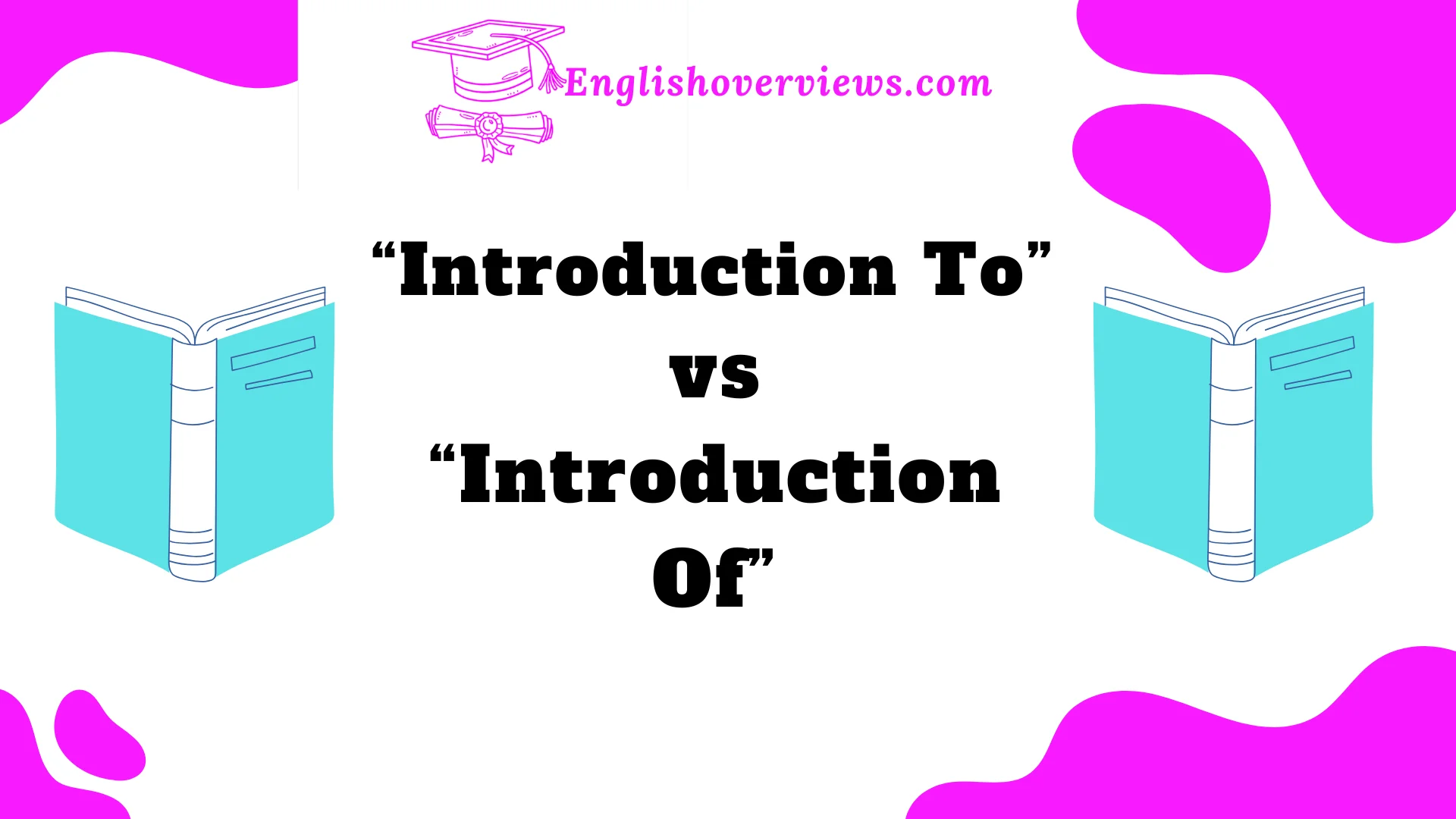Understanding the nuances of the word “introduction” can be tricky, especially when paired with prepositions like “to” and “of.” These subtle differences impact meaning, tone, and context in both spoken and written language.
Whether you’re crafting a formal speech, academic paper, or casual conversation, mastering these distinctions can elevate your communication skills. In this comprehensive guide, we’ll explore everything you need to know about “introduction,” including its historical roots, modern applications, and real-world examples.
By the end of this post, you’ll have a deep understanding of how to use “introduction” effectively. From understanding its prepositional pairings to avoiding common mistakes, we’ve got you covered. Ready to dive in? Let’s get started!
1. Understanding “Introduction”: A Linguistic Perspective
Definition of “Introduction” and Its Role in Communication
The word “introduction” refers to the act of presenting something new or unfamiliar. It can apply to people, concepts, ideas, or topics. Its purpose is to bridge the gap between the known and the unknown, creating a sense of familiarity.
Examples:
- Introducing a friend to someone new.
- Presenting a new idea to an audience.
- Writing the opening section of a book.
Types of Introductions
There are three primary types of introductions:
- Personal Introductions: Connecting people in social or professional contexts.
- Conceptual Introductions: Explaining new ideas, theories, or concepts.
- Formal Introductions: Presenting speakers, topics, or events in structured settings.
2. The Historical Evolution of “Introduction”
Origins of the Word “Introduction”
The term “introduction” originates from the Latin word “introductio,” meaning “to lead in.” In the 15th century, it entered Middle English, carrying the same meaning.
How Its Meaning and Usage Have Shifted Over Centuries
- 16th Century: Primarily used in formal and academic settings.
- 18th Century: Expanded to casual and everyday contexts.
- Modern Day: Widely used across various fields, including literature, technology, and public speaking.
3. Contextual Nuances: How Prepositions Shape Meaning
Overview of Prepositional Usage with “Introduction”
The prepositions “to” and “of” are most commonly used with “introduction.” Each carries distinct meanings that influence context and tone.
Factors That Influence Preposition Choice
- Audience: Formal settings often require precision.
- Purpose: The goal of the introduction (e.g., explaining vs. presenting).
- Tone: Casual vs. professional communication.
4. Deep Dive into “Introduction To”
What Does “Introduction To” Imply?
“Introduction to” emphasizes connection or direction towards a subject or person. It’s commonly used in educational and explanatory contexts.
Common Contexts for “Introduction To”
- Introducing a topic, subject, or field.
- Educational courses (e.g., “Introduction to Physics”).
Real-World Examples
- “An Introduction to Python Programming.”
- “Introduction to Data Analysis: A Beginner’s Guide.”
5. Examining “Introduction Of”: A Practical Approach
What “Introduction Of” Represents
“Introduction of” highlights ownership or origin. It’s often used in formal introductions, such as presenting a speaker or new concept.
Contextual Use Cases
- Formal ceremonies: “Introduction of the guest of honor.”
- Historical references: “Introduction of the printing press.”
Modern Applications
- Corporate settings (e.g., “Introduction of a new policy”).
- Product launches (e.g., “Introduction of the latest smartphone model”).
6. Comparing “Introduction To” and “Introduction Of”
Key Differences in Meaning and Usage
| Aspect | Introduction To | Introduction Of |
| Meaning | Learning or engaging with a topic | Presenting a person or thing |
| Example | “Introduction to Chemistry” | “Introduction of the Speaker” |
| Common Context | Education, Manuals | Ceremonial, Historical |
Statistical Analysis: Which Form is More Common?
- Academic Writing: “Introduction to” appears more frequently.
- Formal Events: “Introduction of” dominates.
7. Special Cases: “Introduction” in Formal Scenarios
How to Write an Effective Formal Introduction
- Start with Context: Provide background information.
- Mention Relevance: Explain why the introduction matters.
- Use Proper Prepositions: Align with the purpose.
“Introduction To the Speaker” vs. “Introduction Of the Speaker”
- “Introduction to the speaker” is used in conversational contexts.
- “Introduction of the speaker” is preferred in formal ceremonies.
8. Exploring Other Prepositions with “Introduction”
Less Common but Valid Combinations
- Introduction for: Emphasizes purpose or audience.
- Example: “An introduction for beginners.”
- Introduction by: Highlights the introducer.
- Example: “An introduction by the author.”
9. Practical Usage: Common Pitfalls and Best Practices
Tips for Choosing the Correct Preposition
- Understand the context.
- Prioritize clarity over formality.
- Avoid redundant phrases.
Examples of Effective Usage
- Business Proposal: “Introduction of new strategies for growth.”
- Educational Context: “Introduction to advanced mathematics.”
10. Conclusion: Mastering Prepositional Nuances with “Introduction”
Understanding the subtleties of “introduction” and its prepositions can make a significant difference in your writing and speech. By paying attention to context, audience, and tone, you’ll communicate more effectively. Use this guide as your reference to ensure you always make the right choice.
FAQs
1. What is the difference between “introduction to” and “introduction of”?
- “Introduction to” connects a person or audience to a topic.
- “Introduction of” presents a person or concept.
2. Is “introduction to” more common than “introduction of”?
Yes, especially in educational and explanatory contexts.
3. Can I use other prepositions with “introduction”?
Yes, combinations like “introduction for” and “introduction by” are valid but less common.
4. Which is correct: “Introduction to the speaker” or “Introduction of the speaker”?
Both are correct depending on the context. Use “to” for conversational settings and “of” for formal events.
5. How can I avoid mistakes when using “introduction”?
Focus on clarity and purpose. Choose the preposition that best fits the context of your sentence.

English Overviews is a resourceful website dedicated to providing valuable content related to grammar and vocabulary. Muhammad Haroon has made notable contributions, sharing insights on various subjects, including WordPress themes and plugins. The primary goal of the site is to help users improve their English language skills effectively.











